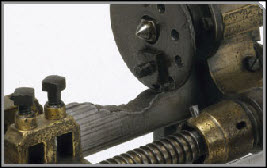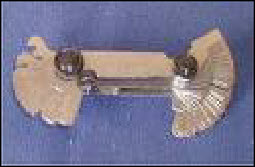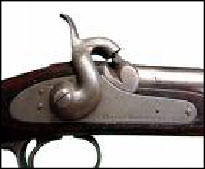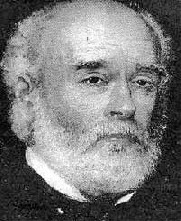




12th November 2010
Engineers & Engineering
In 1833 he returned north to Manchester and began his own company specialising in producing machine parts. Manchester was ideally placed as it was the terminal point for the first major public railway and the centre of the textile industry. This meant there was a high demand for machine parts. He realised that machines must be made to a very high standard of accuracy and that true planes were a vital part of this and he conceived the idea of scraping the surface rather than grinding.
During the Crimean War he was asked to design and build machines which would mass produce the Enfield Rifle. After exhaustive tests he produced the Whitworth Rifle which, although superior to the Enfield Rifle, had a small bore size and so was rejected by the Ordinance Board.
He achieved public eminence at the Great Exhibition in 1851 by exhibiting a collection of engineering tools. He was honoured by the Universities of Oxford and Dublin with honorary degrees. In 1869 he was made a baronet. He died in 1887 in Monte Carlo leaving a fortune of more than one million pounds. The majority of this was left for a wide range of charitable and educational purposes; £157,000 being set aside to form the Whitworth Institute.
Sir Joseph Whitworth is recognised as one of the great Victorian mechanical engineers and his Whitworth screw thread became the British Standard for screws and thus transformed mechanical engineering.
Joseph Whitworth was born in 1803 in Stockport, Cheshire. He was the son of a schoolmaster and was educated at home until the age of 12. When he was 14 he became apprenticed to his uncle’s cotton spinning mill in Derbyshire with the view to him eventually becoming a partner. However, he became fascinated by the machines and determined to become an engineer making machinery. To this end he left his uncle’s company to join a succession of engineering companies and in 1825 he moved south to London to work at Henry Maudslay’s works in Lambeth.
Joseph Whitworth was born in 1803 in Stockport, Cheshire. He was the son of a schoolmaster and was educated at home until the age of 12. When he was 14 he became apprenticed to his uncle’s cotton spinning mill in Derbyshire with the view to him eventually becoming a partner. However, he became fascinated by the machines and determined to become an engineer making machinery. To this end he left his uncle’s company to join a succession of engineering companies and in 1825 he moved south to London to work at Henry Maudslay’s works in Lambeth.


Whitworth thread gauge

The Whitworth Rifle

